Complete Guide to Gettysburg National Military Park in Pennsylvania, including things to do, history, nearby lodging and camping, directions, and so much more.
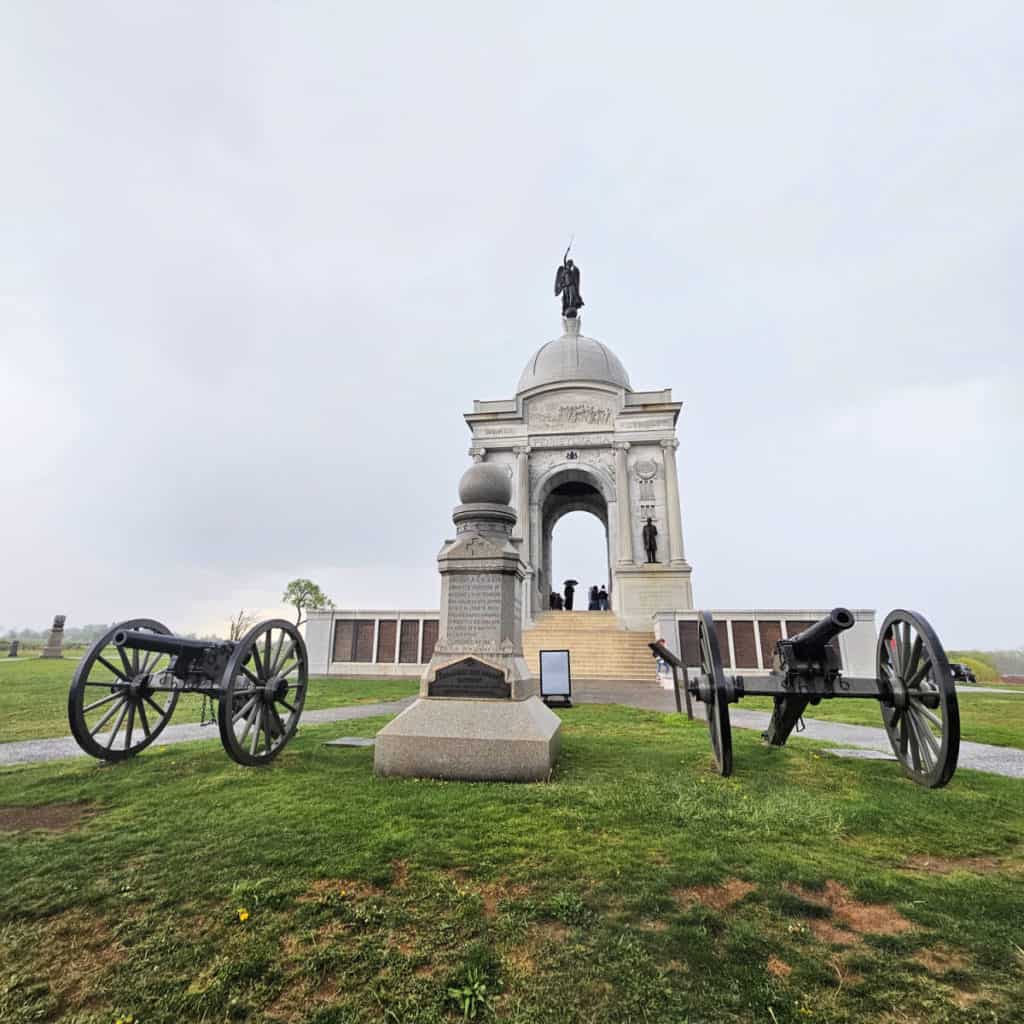
Gettysburg National Military Park
From July 1 to July 3, 1863, Gettysburg National Military Park was the site of the bloodiest battle of the American Civil War. It was also a turning point in the war as the Union stopped General Robert E. Lee's second invasion of the North.
On November 19, 1863, President Abraham Lincoln gave one of America's most famous speeches at the Soldiers' National Cemetary (now the Gettysburg National Cemetary), the Gettysburg Address.
These two significant events in American History definitely make it worth visiting the park and remembering those who fought for our freedoms.

Is Gettysburg National Military Park worth visiting?
Absolutely, Gettysburg National Military Park is worth visiting for several reasons. As one of the most significant battlefields of the American Civil War, the park offers a unique opportunity to delve into the history of the conflict, explore well-preserved battle sites, and learn about the sacrifices made by soldiers on both sides of the conflict. The park features numerous monuments, memorials, and exhibits that help visitors gain a deeper understanding of the events that took place.
In addition to its historical significance, the park also boasts stunning landscapes and offers a range of recreational activities, including hiking and guided tours. Visiting Gettysburg National Military Park allows you to appreciate the natural beauty of the area while gaining a deeper understanding of the pivotal events that shaped American history.

History of Gettysburg National Military Park
The Gettysburg National Military Park preserves the area where the bloodiest and most important battle of the American Civil War took place. The Battle of Gettysburg began on July 1st and ended on July 3rd, 1863. It is considered a turning point of the Civil War in favor of the Union.
The battle raged for three days in and around the small town of Gettysburg, Pennsylvania. The Battle of Gettysburg was Confederate General Lee’s second attempt to invade the North. More than 160,000 men fought in the battle, with more than 50,000 casualties. The battle is remembered as one of the bloodiest battles in American history.
While there were several important engagements during the battle, perhaps the most famous moment happened after the fact. Abraham Lincoln delivered his stirring address at Gettysburg Cemetery, located within the Gettysburg National Military Park. Lincoln’s address at Gettysburg is one of the most famous speeches ever made.
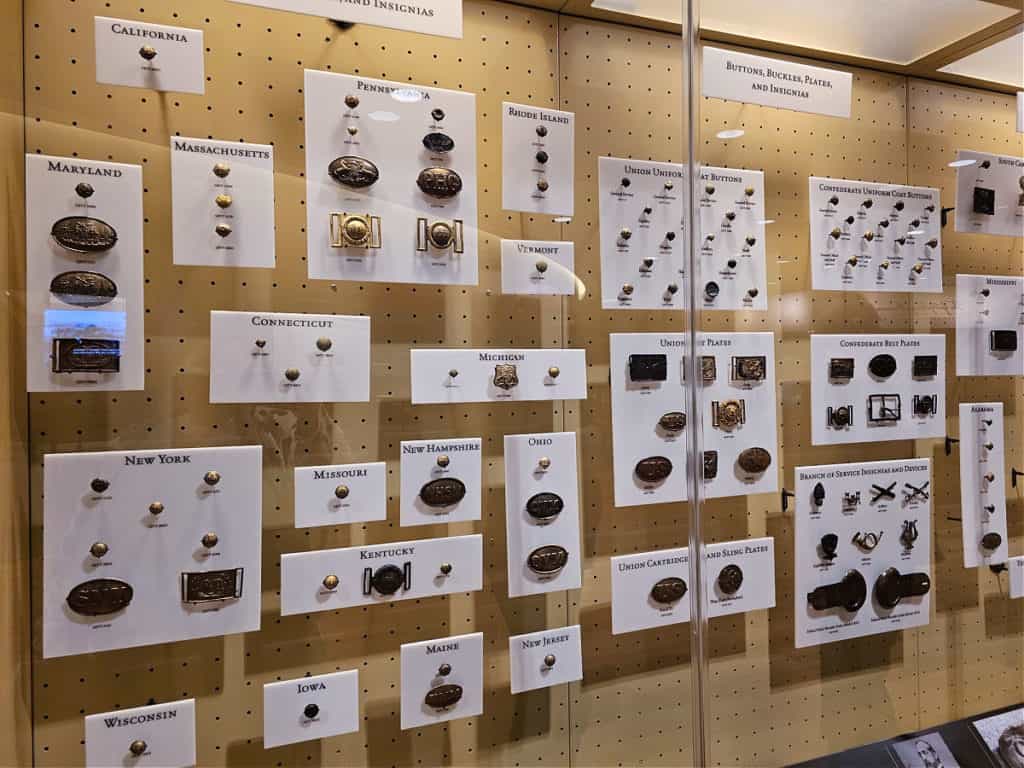
The Battle in Context
Before Gettysburg, Confederate General Robert E. Lee had defeated the Union Army of the Potomac under the command of Maj. Gen. Joseph Hooker at the Battle of Chancellorsville. Chancellorsville is known as Lee’s perfect battle. Bolstered by this, Lee decided to try to make his way North.
By 1863, the consequences of the war had become evident in the state of Virginia. Because the Confederate capital of Richmond was in Virginia, the State became a battleground. Farms and livestock were destroyed by advancing armies, and resources became scarce. Lee set his sights on Pennsylvania and the rich farmland there that would give his army a much-needed boost.
Lee marched his 75,000 strong Army of Northern Virginia north towards Pennsylvania in early June 1863. By the time Lee and his army crossed the Potomac, Union President Abraham Lincoln had replaced Hooker as the head of the Army of the Potomac with General George G. Meade. Meade maneuvered 90,000 Union soldiers in between Lee and the Union capital of Washington D.C.
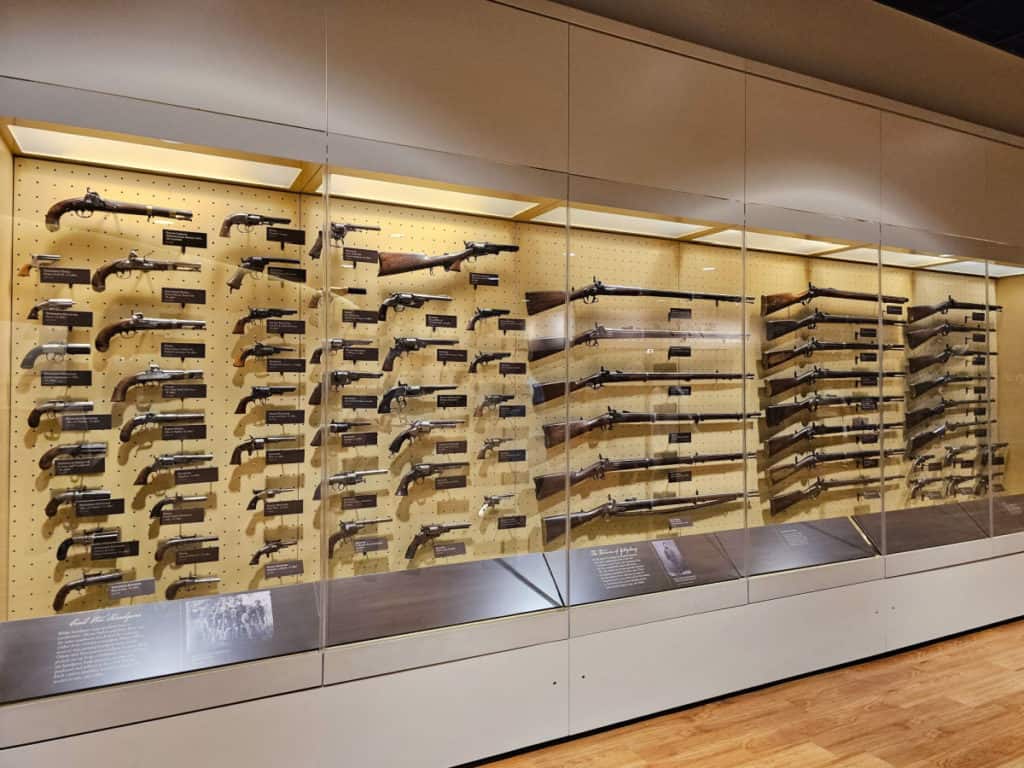
The Battle Of Gettysburg
Lee was aware that the Union was on his trail and gaining ground, so he planned to meet them at Gettysburg. Lee sent a division under Gen. A.P Hill into Gettysburg on July 1st to gather supplies before the arrival of the Union. Hill found two Union divisions already there, and the Battle of Gettysburg began.
In this first engagement, the Confederates managed to push the Union divisions out of town to Cemetary Hill. Not much more was achieved on the first day. The Union dug in and created a strong defensive line from Cemetery Ridge to Little Round Top.
By the morning of July 2nd, the Union forces had been reinforced and were in a strong defensive position South of Gettysburg. Lee attacked the Union line first, from the left and the right. Fighting to the Left of the Union line in an area called Devil's Den and Little Round Top was particularly fierce. The Confederates managed to break through the line at Devil's Den, but the Union line held at Little Round Top.
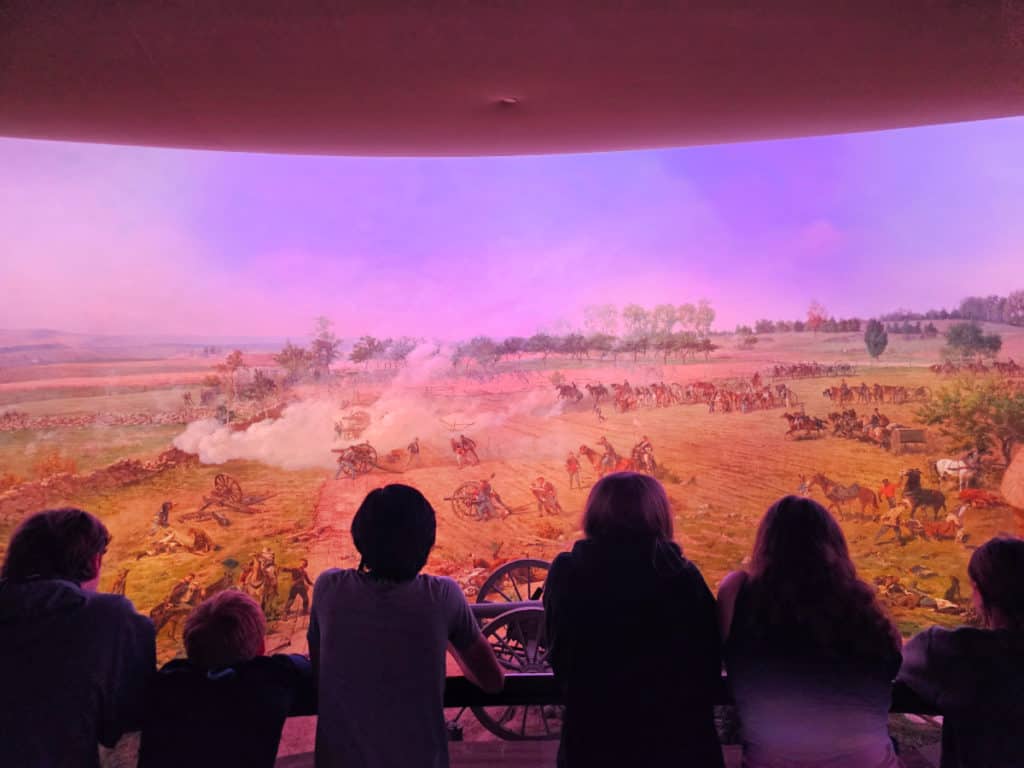
Picketts Charge
After two days of fighting, the casualties on both sides were already staggering by the morning of July 3rd. The Confederates had managed to push through the Union line the previous day at Devil's Den but had been pushed back at Culp's Hill.
Lee believed the Confederates would be able to break the center of the Union line because of the breaks to the left and right that his forces had managed to make the day before. On July 3rd, Lee ordered an assault on the center of the Union line at Cemetary Ridge under the leadership of George Pickett.
This last charge, later known as ‘Pickett’s Charge’ was a daring but gross miscalculation. The Confederate forces marched through open fields to attack the Union, who had dug in at Cemetery Hill. While firing at the advancing Confederates, the Union attacked them from the left and right flanks.

Confederate Defeat
Pickett's advancing division came under attack from all sides. The ensuing engagement was a bloodbath. About 15,000 men charged the Union line at Cemetary Hill, and less than half of them returned.
After Pickett's Charge, Lee waited for a Union counterattack that never happened. Defeated, Lee marched the remainder of his army back to Virginia on July 4th. Meade came under heavy criticism for not pursuing the defeated Confederates. Lincoln believed that Meade missed an opportunity to crush the Confederacy in the Aftermath of Gettysburg.
In November 1863, Union President Abraham Lincoln delivered his famous "Gettysburg Address" at the dedication of the National Cemetery at Gettysburg within the grounds of the Gettysburg National Military Park. Here, he honored the dead, and the Union's fight against the Confederacy became a fight for Freedom and Democracy.

Things to know before your visit to Gettysburg National Military Park
Entrance fee
$0.00 - There is no entrance fee to visit the park.
Learn more about National Park Passes for parks that have an entrance fee.
$80.00 - For the America the Beautiful/National Park Pass. The pass covers entrance fees to all US National Park Sites and over 2,000 Federal Recreation Fee Sites for an entire year and covers everyone in the car for per-vehicle sites and up to 4 adults for per-person sites.

Buy your pass at this link, and REI will donate 10% of pass proceeds to the National Forest Foundation, National Park Foundation, and the U.S. Endowment for Forestry & Communities.
National Park Free Entrance Days -Mark your calendars with the five free entrance days the National Park Service offers annually.
Time Zone
Eastern Time Zone
Pets
Pets are allowed at Gettysburg National Military Park, but there are certain rules and restrictions you need to follow.
Pets must be kept on a leash no longer than 6 feet at all times and should not be left unattended. While pets are allowed on the battlefield, trails, and park roads, they are not permitted in the Museum and Visitor Center, the National Cemetery, and other park buildings.
Cell Service
Cell service within the park can be variable, with some areas having good reception while others might have limited or no coverage. It's important to remember that the park encompasses a large area with varying terrain. Generally, you can expect better reception in and around the town of Gettysburg and near the visitor center.
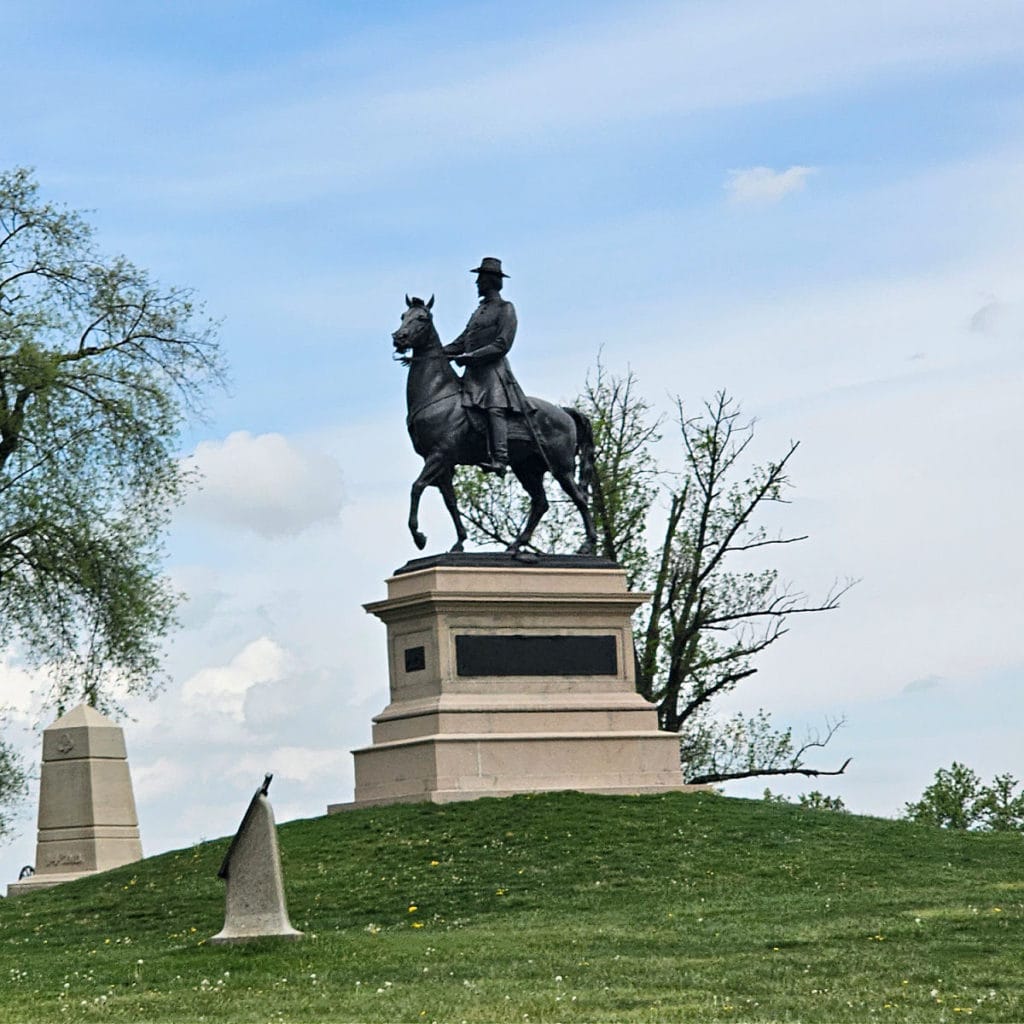
Park Hours
The battlefield and roads are open thirty minutes before sunrise to thirty minutes after sunset. The Visitor Center is open daily from 8 AM to 5 PM from March 1 to November 30 and from 9 AM to 4 PM from December to February.
Wi-Fi
There is a free public WiFi available at the Gettysburg National Military Park Museum and Visitor Center.
Insect Repellent
Insect repellent is always a great idea when outdoors, especially if you are around any body of water.
We use Permethrin Spray on our clothes before our park trips.
Water Bottle
Make sure to bring your own water bottle and plenty of water with you. Plastic water bottles are not sold in the park.

Parking
The park has several large parking lots that are located near the Visitor Center, the battlefield monuments and memorials, and other popular tourist attractions. Some of the parking lots are located close to walking trails and picnic areas, making it easy for visitors to explore the park on foot.
Food/Restaurants
There are no restaurants inside the park, but the nearby Gettysburg town offers various dining options.
Gas
There are no gas stations within Gettysburg National Military Park; however, multiple options are available in the town of Gettysburg and its surrounding areas. Make sure to fuel up before entering the park to ensure a worry-free exploration of the historic site and its beautiful surroundings.
Drones
Drones are not permitted within National Park Sites.
National Park Passport Stamps
National Park Passport stamps can be found in the visitor center.
Make sure to bring your National Park Passport Book with you or we like to pack these circle stickers so we don't have to bring our entire book with us.
Electric Vehicle Charging
There are 38 public charging stations, 4 of which are free EV charging stations, in Gettysburg, Pennsylvania.
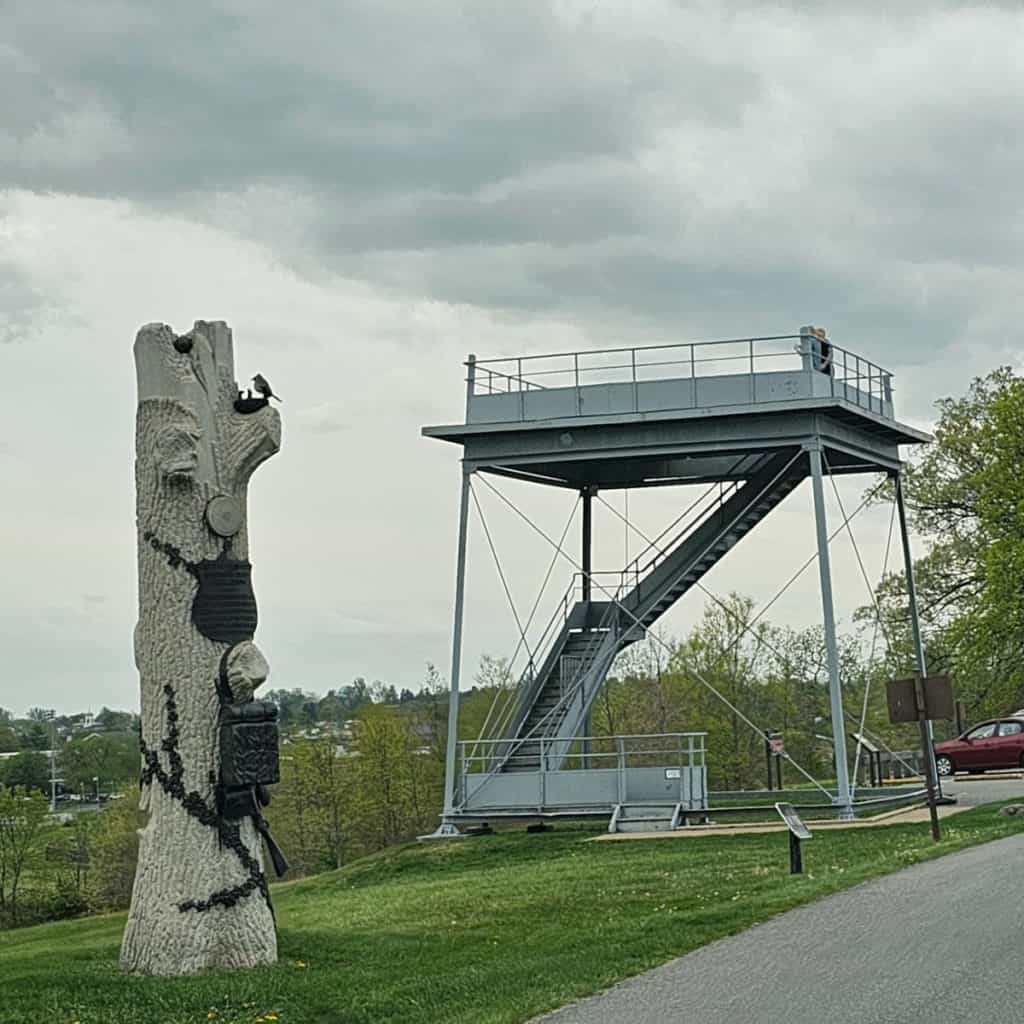
Details about Gettysburg National Military Park
Size - roughly 6,000 acres
Date Established - February 11, 1895
National Park Address - 1195 Baltimore Pike, Gettysburg, PA 17325
National Park Map

Where is Gettysburg National Military Park?
Gettysburg National Military Park is located in Adams County, Pennsylvania.
Estimated distance from major cities nearby
- Baltimore, MD - 58 miles
- Washington, DC - 80 miles
- Philadelphia, PA - 97 miles
- Pittsburgh, PA - 143 miles
- Newark, NJ - 202 miles
- Jersey City, NJ - 210 miles
- New York, NY - 213 miles
- Norfolk, VA - 269 miles
- Virginia Beach, VA - 283 miles
- Chesapeake, VA - 280 miles
Estimated Distance from nearby National Parks
- Shenandoah National Park - 98 miles
- Cuyahoga Valley National Park - 292 miles
- New River Gorge National Park - 321 miles
- Great Smoky Mountains National Park - 501 miles
- Mammoth Cave National Park - 637 miles
- Acadia National Park - 700 miles
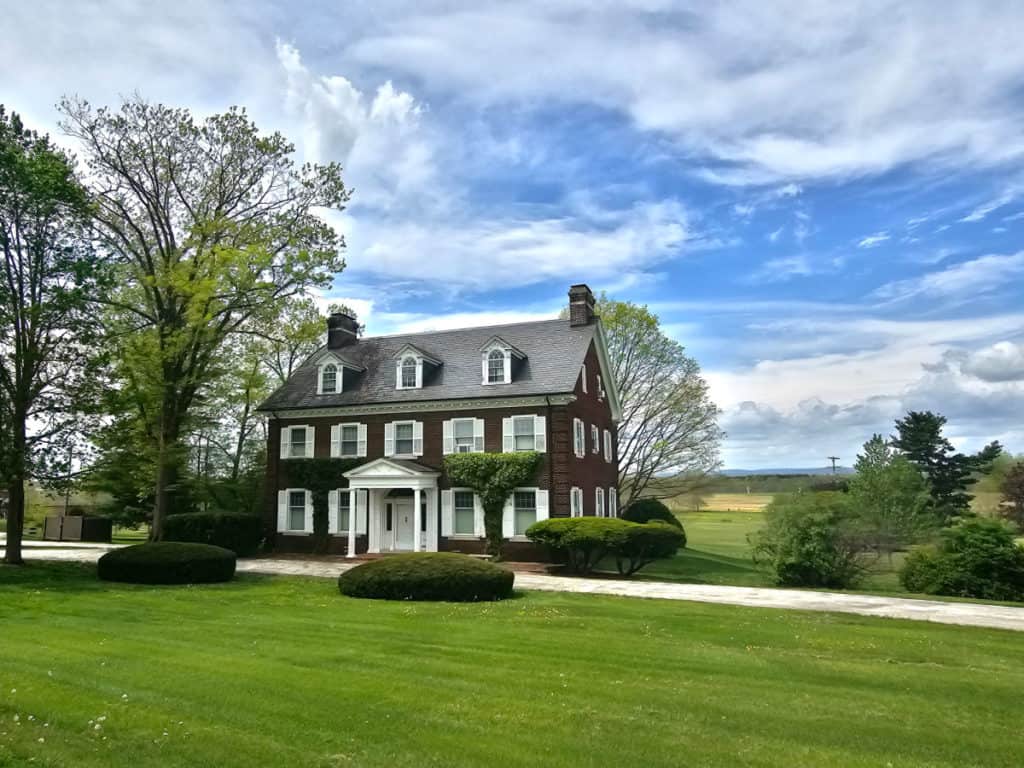
Where is the National Park Visitor Center?
The museum and visitor center are located at 1195 Baltimore Pike (Route 97), with a back entrance from Taneytown Road (State Route 134).
Getting to Gettysburg National Military Park
Closest Airports
- Hagerstown Regional Airport (HGR/KHGR)
- Harrisburg International Airport (MDT/KMDT)
International Airports
- Baltimore/Washington International Thurgood Marshall Airport (BWI/KBWI)
- Washington Dulles International Airport (IAD/KIAD)
- Regional Airports
- Eastern WV Regional Airport (MRB/KMRB)
- Carroll County Regional (QQG)

Driving Directions
From North or South, follow US 15 to Gettysburg and watch for signs to direct you to the National Park Service Museum and Visitor Center. The signs are near the exit at Rt. 97. Go north on Route 97 and look for the visitor center entrance, which will be on your left at the stoplight. From East or West, drive into Gettysburg on US Rt. 30, turn South on Baltimore Street (Rt. 97), and follow signs to the entrance of the visitor center, which will be on your right at the stoplight.
Best time to visit Gettysburg National Military Park
The best time to explore this iconic battlefield and its picturesque surroundings is during the spring and fall months, when the weather is temperate and the park is adorned with vibrant foliage.
These seasons not only offer comfortable conditions for outdoor activities like hiking and guided tours, but also coincide with a series of engaging events, such as living history encampments and commemorative ceremonies.
Immerse yourself in the captivating stories of the Civil War and witness firsthand the hallowed grounds where the tide of American history was forever changed.
Weather and Seasons
The hottest season starts from May 28th to September 17th, with an average daily high temperature above 77 degrees.
The coldest season starts from December 1st to March 5th, with an average daily high temperature below 48 degrees.
The snowiest season typically spans from November 17th to March 31st, with snowfall of at least 1 inch per month. February gets the most snow with an average snowfall of 7.6 inches.
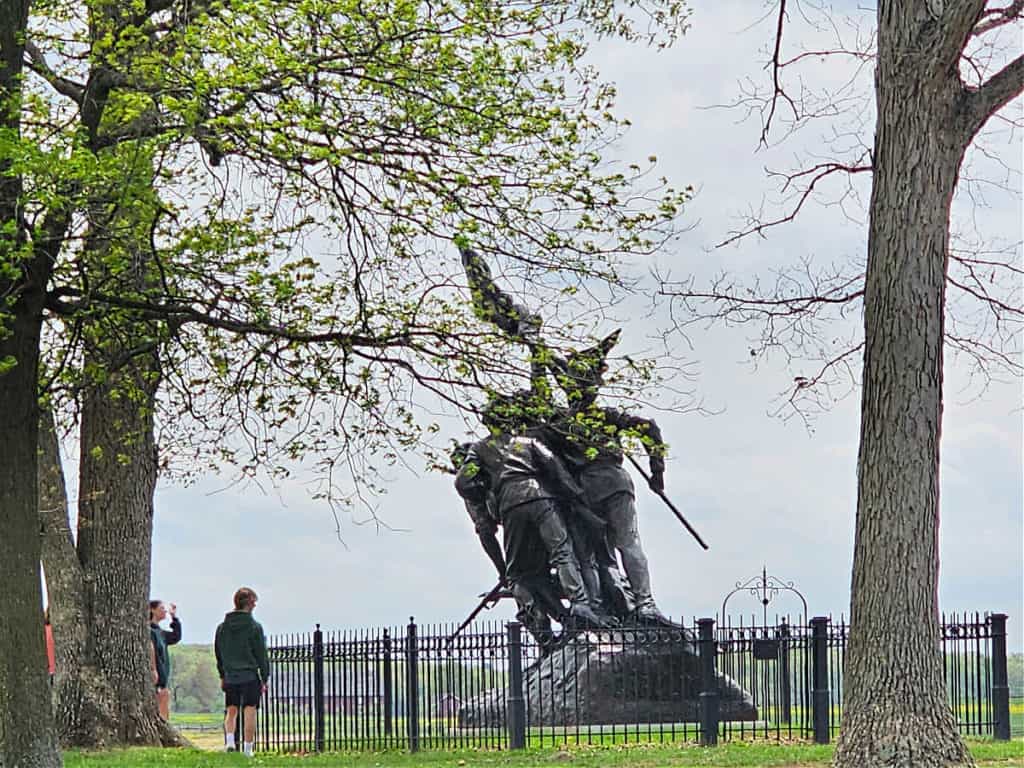
Best Things to Do in Gettysburg National Military Park
Visitor Center
Begin your journey at the Gettysburg National Military Park Museum and Visitor Center. This state-of-the-art facility offers a comprehensive introduction to the park, featuring interactive exhibits, a 22-minute film called "A New Birth of Freedom," and the Gettysburg Cyclorama – a massive 360-degree painting that depicts the climactic battle. Don't forget to stop by the bookstore for unique souvenirs and reference materials to enhance your visit.
Junior Ranger Program
For families with young children, the Junior Ranger Program is a must-do. This interactive and educational program encourages kids to explore the park, learn about the Civil War, and engage with history in a fun and memorable way. Complete a series of activities and earn a Junior Ranger badge as a token of your achievement.

Auto Tour
Explore the vast battlefield at your own pace with a self-guided auto tour. Follow the 24-mile route with 16 stops, each marked by informative wayside exhibits. Gain insights into the historic events and key moments of the battle through detailed descriptions and maps. To further enhance your experience, consider purchasing an audio tour or hiring a licensed battlefield guide.
Ranger Programs
Take advantage of the National Park Service's free ranger-led programs to deepen your understanding of the battle and its significance. These guided tours and talks cover various aspects of the Civil War, from the strategies and tactics used by both sides to the personal stories of soldiers and civilians. Check the park's schedule for daily program offerings.
Living History Programs
Witness history come to life through living history programs, where volunteers in period clothing recreate the sights, sounds, and experiences of the Civil War era. These programs include demonstrations of military drills, camp life, and even period music. Living history programs typically take place on weekends from April through October, with additional dates available during the summer months.
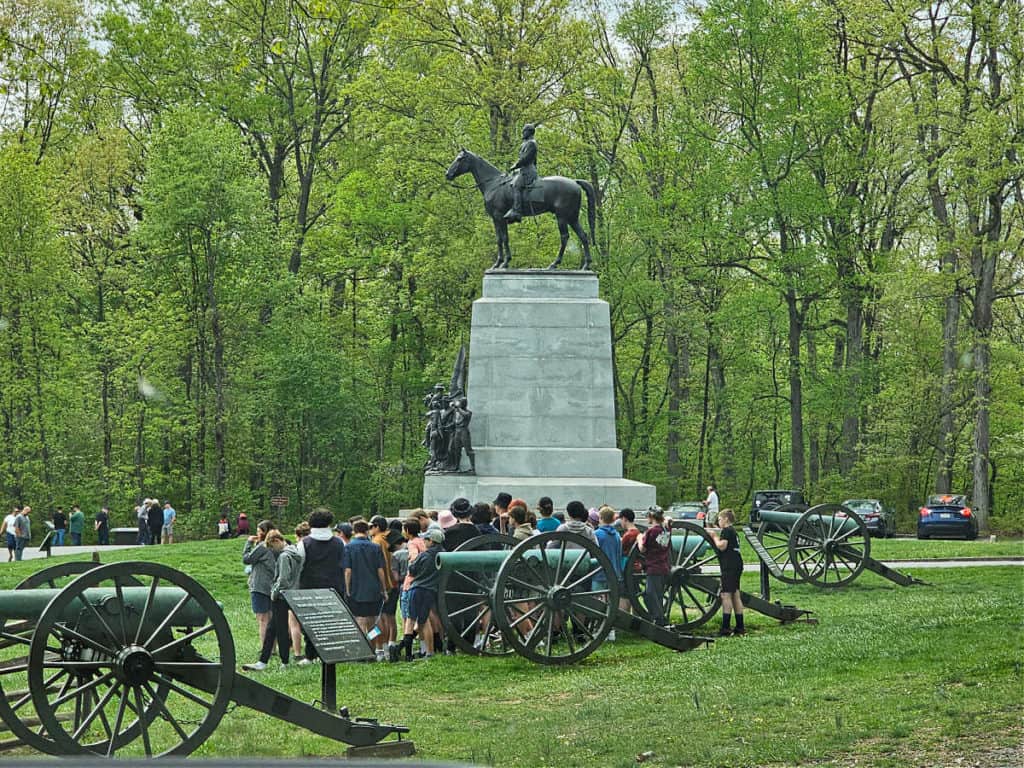
Davis Wills House
Visit the David Wills House, where President Abraham Lincoln stayed the night before delivering the Gettysburg Address. Explore this historic home and its exhibits, which showcase Lincoln's visit, the aftermath of the battle, and the ongoing process of commemorating the fallen.
Soldiers National Cemetery
Pay your respects at the Soldiers National Cemetery, the final resting place for more than 3,500 Union soldiers who lost their lives in the Battle of Gettysburg. The cemetery is also the site where President Lincoln delivered his famous Gettysburg Address on November 19, 1863. Take a moment to reflect on the sacrifices made by these brave men as you stroll through this hallowed ground.
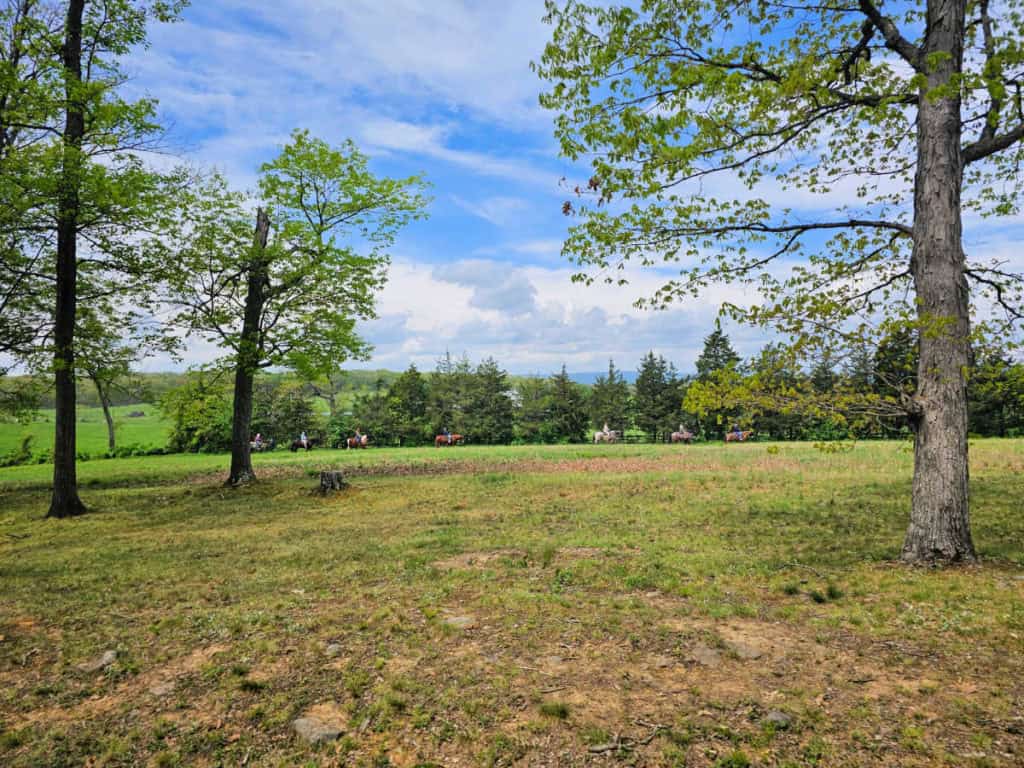
Horseback Riding Trails
Experience the battlefield from a unique perspective by exploring it on horseback. The park does not offer horseback rides, but several local companies offer guided horseback tours. For those bringing their own horses, limited trailer parking is available at McMillan Woods on West Confederate Avenue. The lot fills quickly on weekends in spring, summer, and fall, so arrive early. Once full, no alternative trailer parking is available on the battlefield.
Special Events
Mark your calendar for these annual events at Gettysburg National Military Park.
Battle Anniversary - Commemorate the anniversary of the battle each year from July 1st to 3rd with ranger programs, living history demonstrations, and other special activities.
Dedication Day Events - Honor the anniversary of Lincoln's Gettysburg Address on November 19th with a ceremony and wreath-laying at the Soldiers National Cemetery.
Annual Music Muster - Enjoy a weekend of Civil War-era music in August, featuring live performances by various musical groups and individual artists.
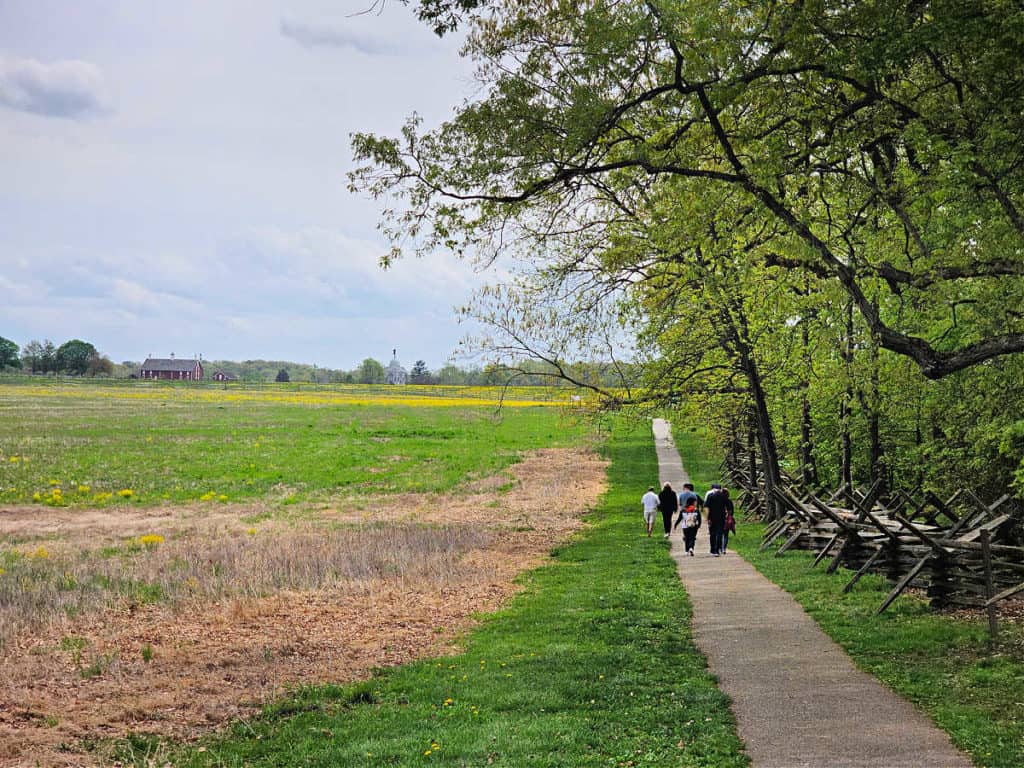
Hiking in Gettysburg National Military Park
The Gettysburg Trail is an easy 2.8-mile loop trail that takes approximately an hour. The trail loops around an open field with monuments along the route.
The Billy Yank Trail is a 10-mile loop with approximately 700 feet of elevation gain. Plan at least 4 hours to complete. The Boy Scouts of America established the trail, but some areas are not well-signed. I would recommend getting one of the booklets available at the visitor center, which is available for a small fee.
The Johnny Reb Trail is an easy 3.7-mile loop trail that takes 2.5-3 hours to complete. The trail starts at the National Cemetary and passes by monuments relating to Gettysburg through the eyes of the Confederates.
Always carry the 10 essentials for outdoor survival when exploring.
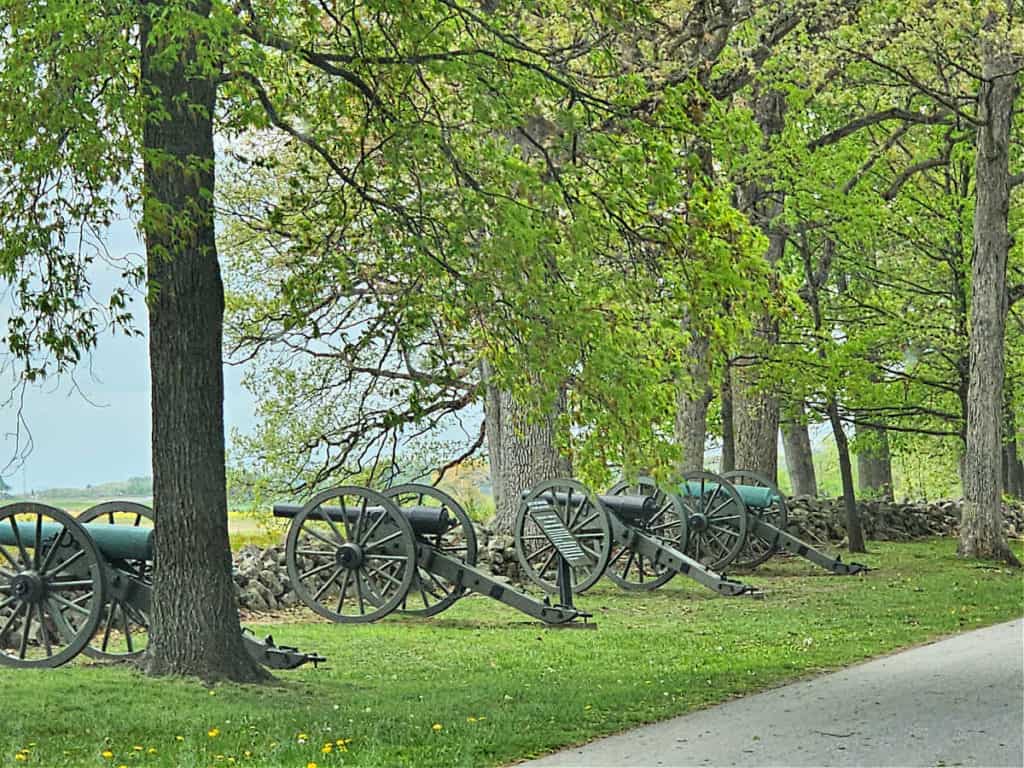
Gettysburg National Military Park Tours
2-Hour Gettysburg Battlefield Guided History Bus Tour with a National Park Guide
⭐️ Rating: 4.7 out of 5 Stars | ⏳ Tour Length: 2 hours | 🚌Check Rates and Availability
This bus tour visits sites from the three day Battle of Gettysburg which was the turning point of the American Civil War. The tour guide will tell you about the phases of the battle as you see Devil's Den, Little Round Top, the location of Pickett's charge, and more.
Gettysburg Battlefield Self-Guided Driving Audio Tour
⭐️ Rating: 4.3 out of 5 Stars | ⏳ Tour Length: 2-4 hours | 🔊Check Rates and Availability
This audio tour uses a GPS Map as you discover Gettysburg at your pace with audio narration. This in depth audio narroration helps bring the history to life as you travel with flexibility and enjoy exploring Gettysburg at your own pace and comfort.
Gettysburg National Military Park 1-Day Tour from Washington D.C.
⭐️ Rating: 4.5 out of 5 Stars | ⏳ Tour Length: 9 hours | 🚌Check Rates and Availability
This tour includes pick-up and drop-off locations in Washington D.C. and Virginia, admission fee to the film "A New Birth of Freedom" and the Cyclorama Experience in the Visitor Center.
The tour will take you to Gettysburg National Military Park to learn about the 1863 battle that took place there. You will also get to see where Lincoln read the Gettysburg Address, learn about the Civil War, then explore downtown Gettysburg before heading back to Washington D.C.
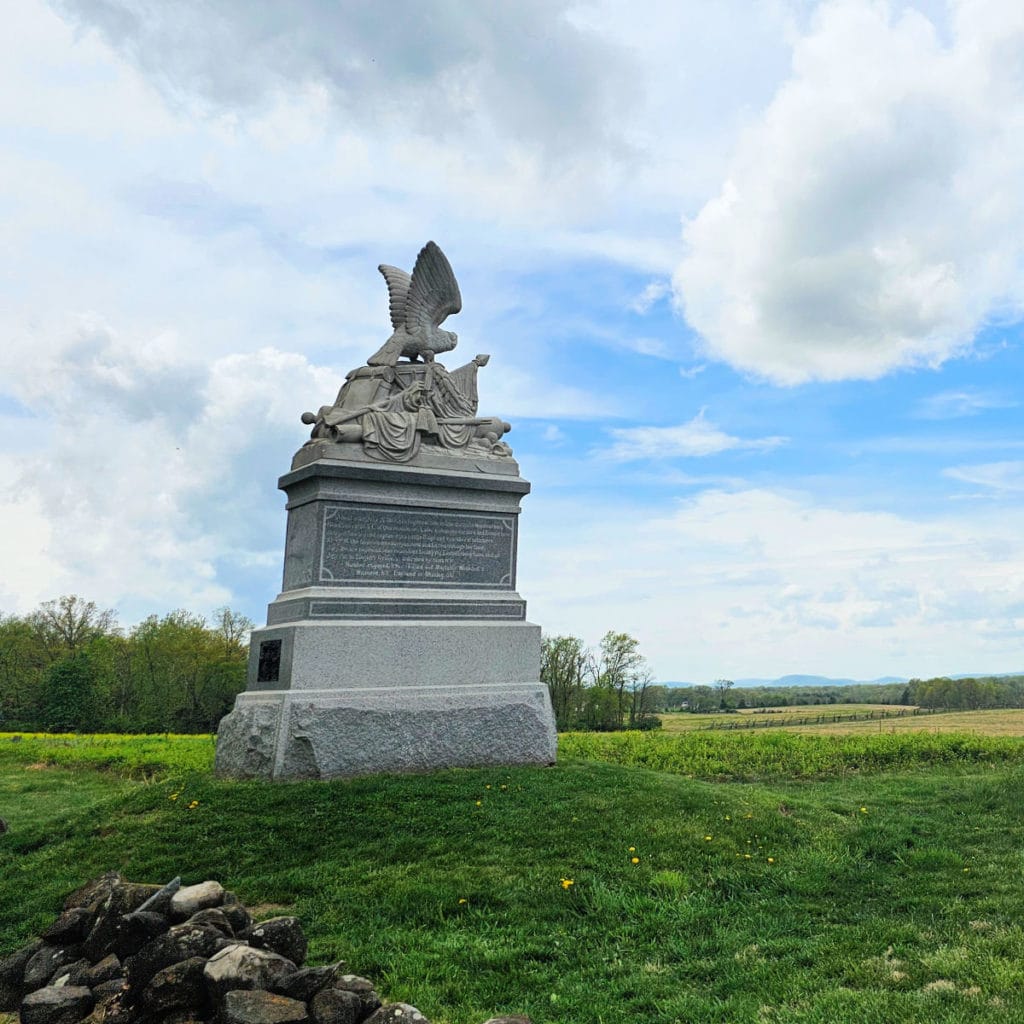
Where to stay when visiting Gettysburg National Military Park
Lodging options within Gettysburg National Military Park.
Historic Bushman House is a Year-Round House located within Gettysburg National Military Park that has been beautifully restored and updated. The house has three bedrooms, 1.5 bathrooms, and a fully equipped kitchen. Bed linens, sheets, pillows, and a limited supply of towels are available.
Historic Slyder Farmhouse is a Year-round cabin located within Gettysburg National Military Park with a large loft bedroom with two queen beds, a bathroom, and a fully equipped kitchen. Bed linens, sheets, pillows, and a limited supply of towels are available.
Hotels near Gettysburg National Military Park
Comfort Suites Near Gettysburg Battlefield Visitor Center
Hotel near Gettysburg Battlefield Visitor Center. You can look forward to staying at one of their spacious suites with a complimentary Hot Breakfast, a fireplace in the lobby, an indoor pool, and a fitness center at Comfort Suites Near Gettysburg Battlefield Visitor Center. In addition to a 24-hour business center, guests can connect to free in-room WiFi.
🏨Ready to Book the Comfort Suites Near Gettysburg Battlefield Visitor Center -> Click Here
Inn at Lincoln Square
The winner of the 2022 Travelers' Choice Awards, The Inn at Lincoln Square, offers an unforgettable experience and provides a choice of staying in one of five luxurious living quarters, including three suites and two townhouses, each with its own unique personality. It's close to the park, has a beautiful garden, Air conditioning, free WIFI, Free self-parking, and more!
🏨Ready to Book the Inn at Lincoln Square -> Click Here
Hotel Gettysburg
Immerse yourself in history while staying at Hotel Gettysburg. This newly renovated hotel offers contemporary comfort, warm hospitality, and timeless charm. You can explore nearby attractions, boutique shops, and restaurants steps away.
🏨Ready to Book the Hotel Gettysburg -> Click Here
Click on the map below to see additional hotels and vacation rentals near the park.
Camping
McMillan Woods Youth Campground
The MCMillan Woods Youth Campground is currently closed for the foreseeable future. There are many camping options in the surrounding area.
The closest National Park Campground can be found at Catoctin Mountain Park.
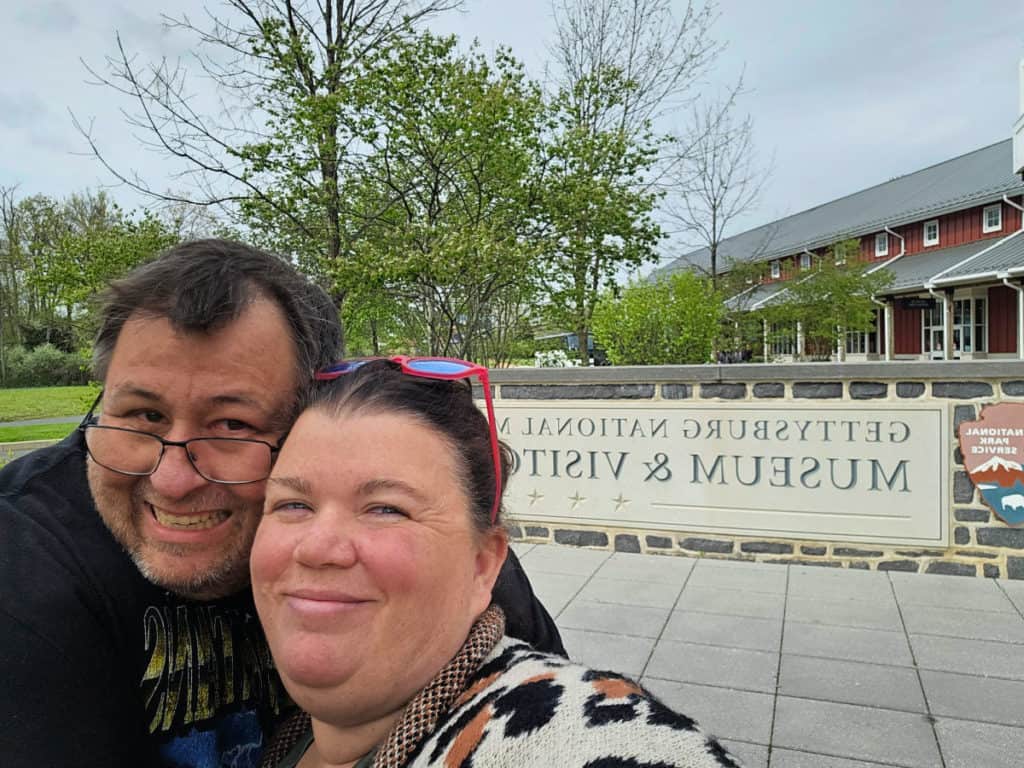
Additional Resources
Gettysburg National Military Park Museum and Visitor Center (Official Guidebook) by Beckon Books.
This official guidebook is designed to help you make the most of your visit.
Gettysburg National Military Park (Images of Modern America) by Jared Frederick(author), Christopher Gwinn (Introduction)
Gettysburg National Military Park was embraced by citizens not only as a shrine but as a commemoration, a public space utilized for leisure, education, politics, and discovery
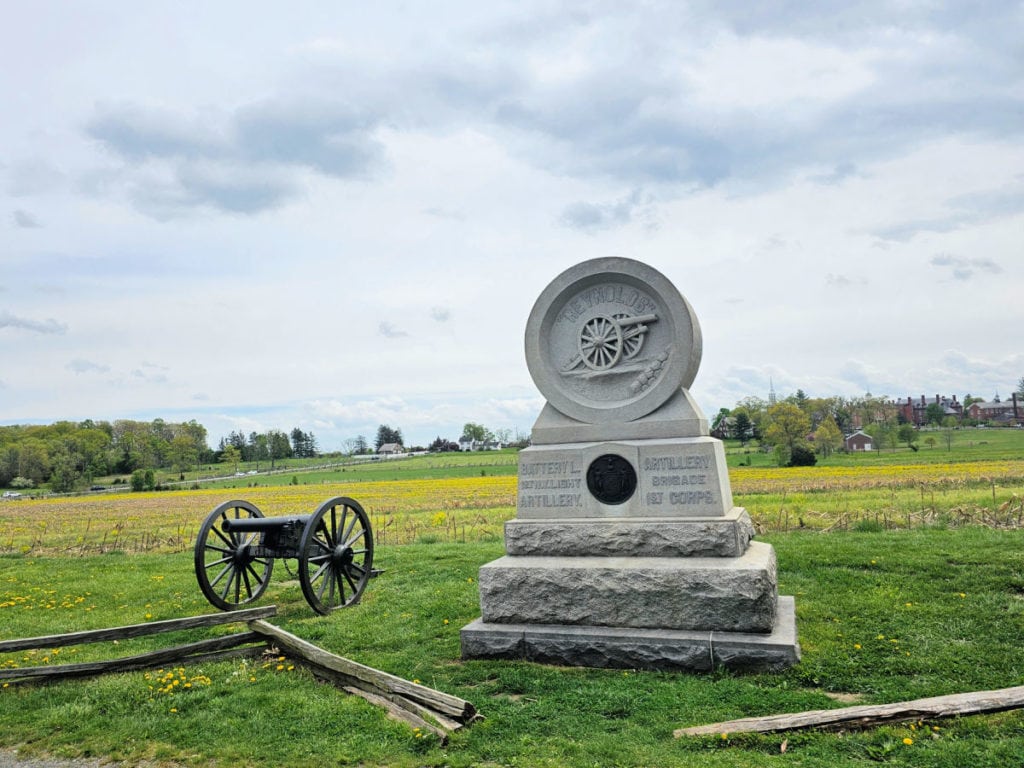
Parks Near Gettysburg National Military Park
Catoctin Mountain Park
Hopewell Furnace National Historic Site
Hampton National Historic Site
Check out all of the Pennsylvania National Parks along with National Parks in West Virginia, National Parks in Ohio, National Parks in New York, New Jersey National Parks, Maryland National Parks, and Delaware National Parks.
Make sure to follow Park Ranger John on Facebook, Instagram, Pinterest, and TikTok

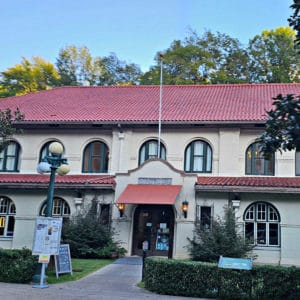

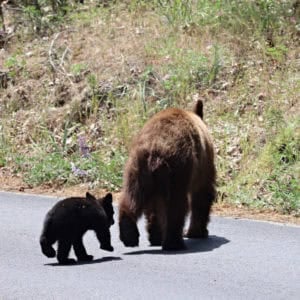
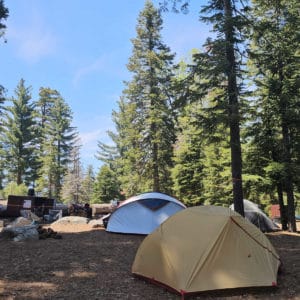
Leave a Reply